Community gardening: the joys of growing greener spaces together
Community gardening is on the up – we explore what it is, the benefits, and how you can get involved
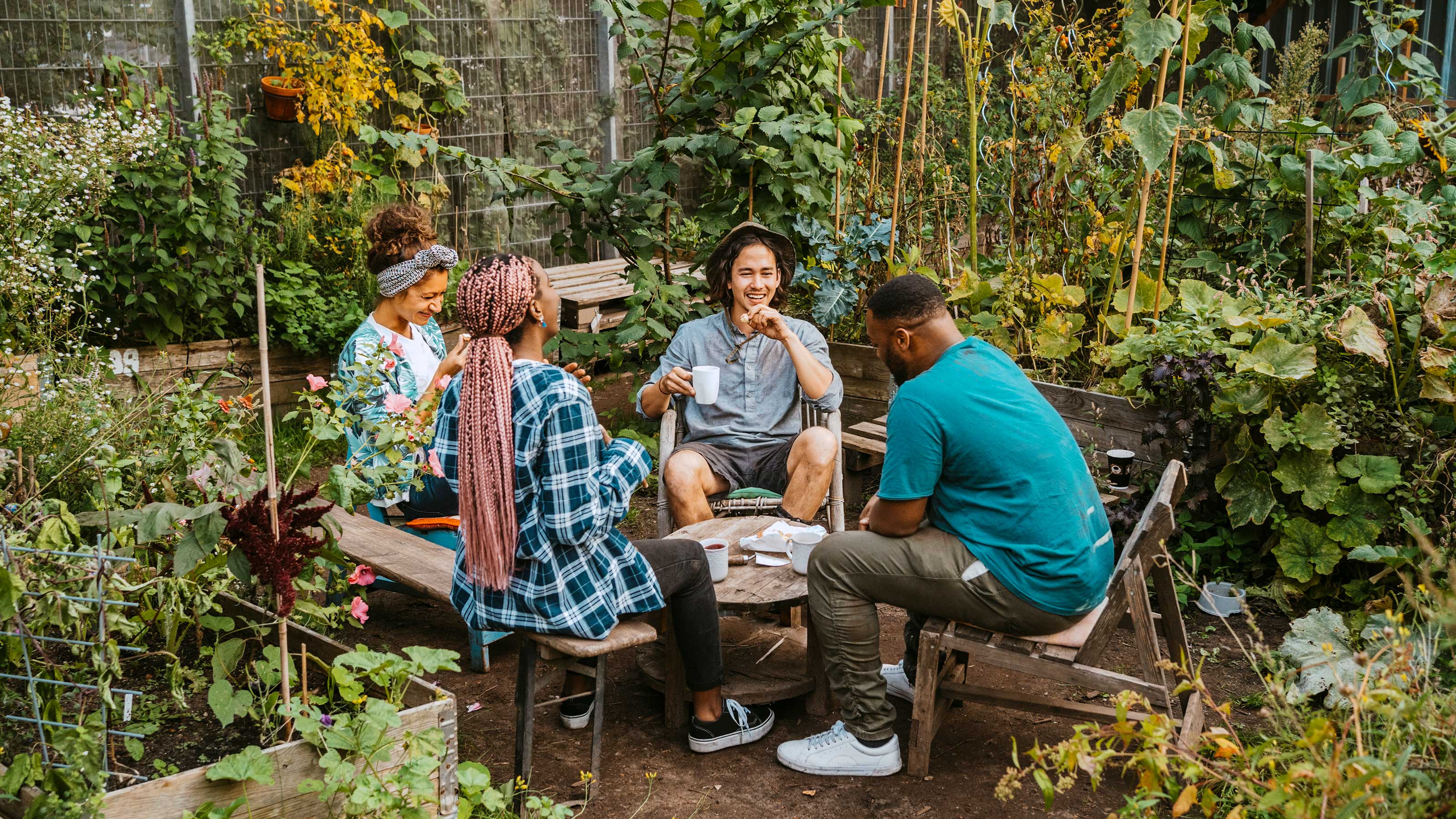

It's no wonder community gardening is having a boost in popularity – a chance to get outdoors, work as a team, and make local spaces more pleasant to be in is bound to lift the spirits, particularly after the turmoil of the last few years.
But growing things as a collective isn't a new idea. The 'potato patch plan', for instance, started up during the recession of the 1890s in Detroit, US. In response to the rise of unemployment, poverty, and inevitable hunger, the then-major Hazen Pingree turned unused areas of land in the city into places to cultivate crops. Seeds, tools, and instructions were provided, and people came together to grow. The success of the program spurred on similar initiatives around the country.
When the economy improved, the interest in the movement faded. Fast forward a few years to the early 1900s, however, and the act of gardening together had a resurgence in light of war-induced food shortages. Tending to such 'War Gardens', otherwise known as 'Victory Gardens', was deemed patriotic – and not only did it help to provide food for communities, it also boosted a sense of morale during the difficult times. Such gardens continued to flourish throughout World War II and a huge 'digging for victory' initiative boomed in the UK.
Nowadays, community gardening is having another, perhaps quieter, but persistent revival. Just a bit of online research will likely bring up all sorts of collectives in your local area – from group allotments to volunteer-led projects for greening up disused urban spaces. The pique in interest isn't overly surprising: for many, Covid-19 has led to much more solitary, screen-based lives than before. The chance to get active, breathe fresh air, and connect with others can be a welcome tonic. After all, now more than ever we have realized the benefits of gardening for mental health.
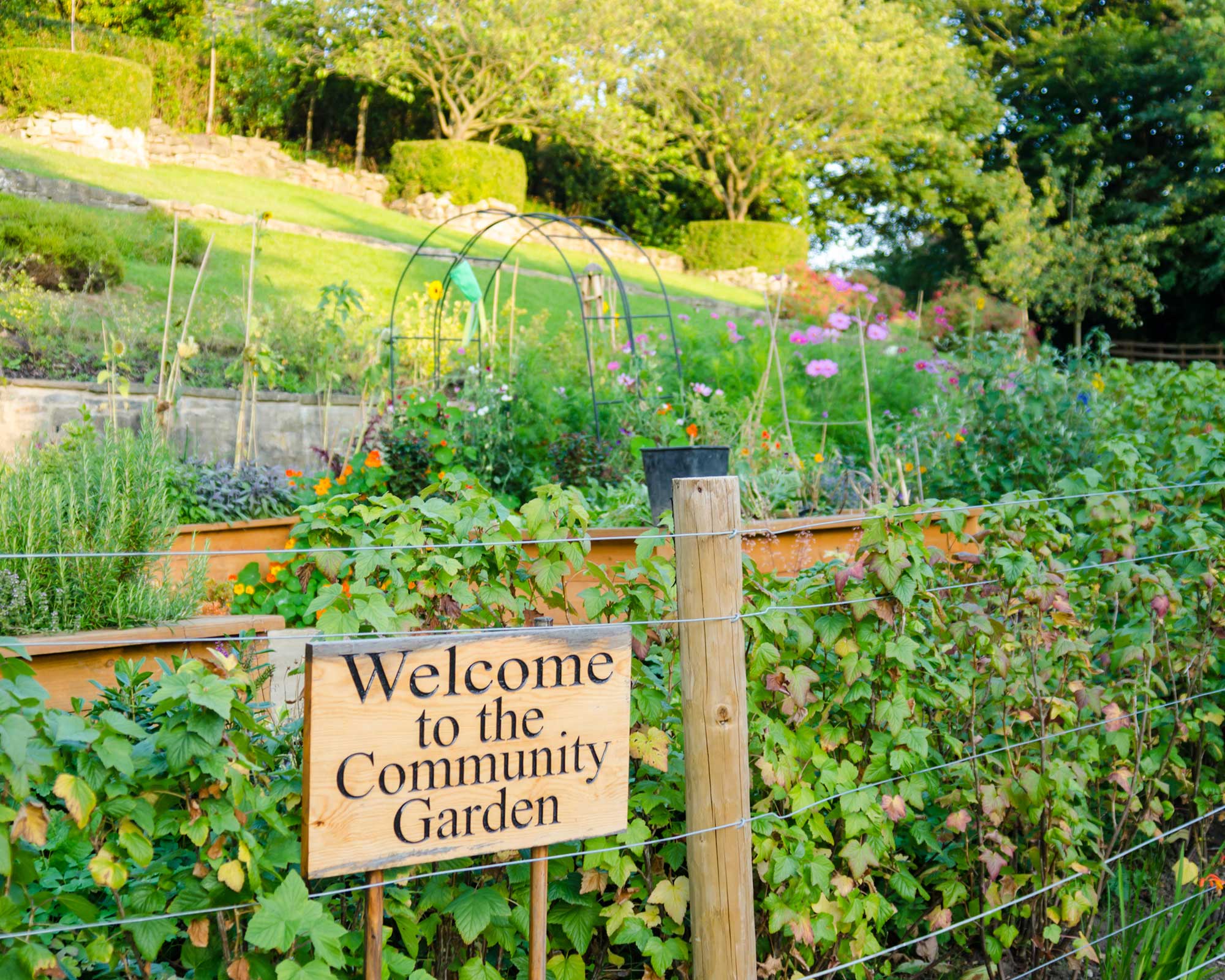
A community garden at Wharton Park in Durham, UK
Community gardening in the modern day
The RHS is a big advocate for community gardening. And, their annual Britain in Bloom competition, which they have run since 2002, is perhaps one of their most well-known, long-standing efforts of encouragement. Communities all over the UK enter, having worked hard to clean up and green up their towns, cities, and villages in order to win a highly-esteemed medal. You may have heard of their 'It's Your Neighbourhood' campaign, too – a similar but non-competitive program that encourages people to come together to create and tend to green spaces.
Steve Brook is the Chairman of Bath in Bloom, who organizes the city's annual application to Britain in Bloom. He explains how there are tons of volunteer-based community gardening initiatives happening all over the World Heritage Site. Projects include the likes of planting more trees, creating beautiful flower beds and container gardening displays along streets, litter picking, and larger-scale work tending to land acquired from the council. All sorts of people and groups get involved, including local schools.
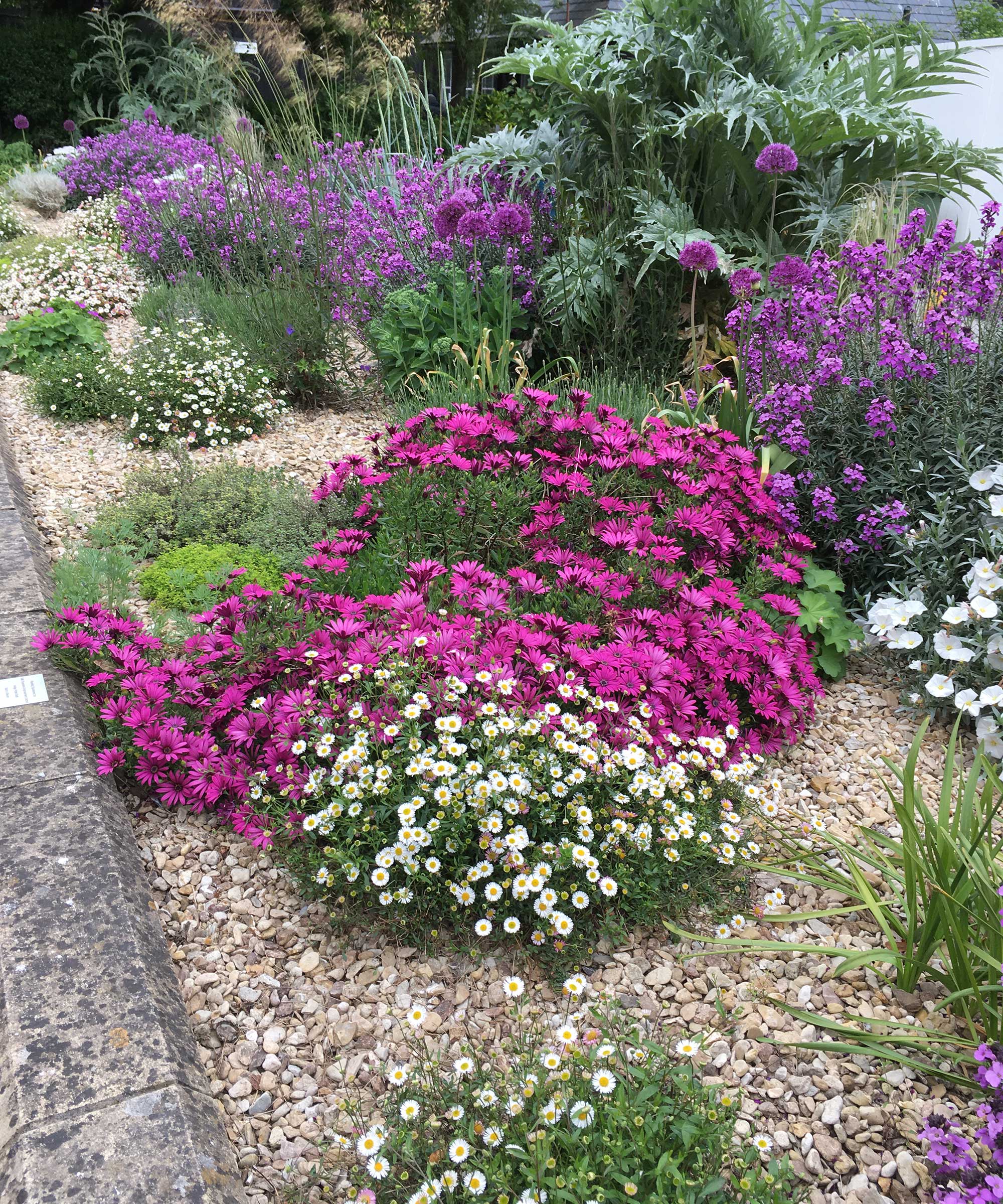
A flower bed planted by volunteers at Bath in Bloom
'From a well-being point of view, gardening of any sort is physically and mentally beneficial,' Steve says. 'But also, people are putting things back into the community. It gives them a sense of purpose and achievement.'
Improving the aesthetics of community areas makes them nicer spaces for everyone to enjoy. Steve explains how, when working on a city-center planting project, passers-by stopped all the time to comment on the work. 'They're pleased because it brings color into their life.' Looking at beautiful flowers on the daily commute to the office, for instance, cheers people up straight away, he adds. Steve also notes how it can be creative – 'that bed was given to us by the council and was a blank canvas, so we could do what we like.'
Of course, greening up city spaces is beneficial to biodiversity, too, Steve adds, especially if you include plenty of plants for pollinators and other wildlife garden ideas.
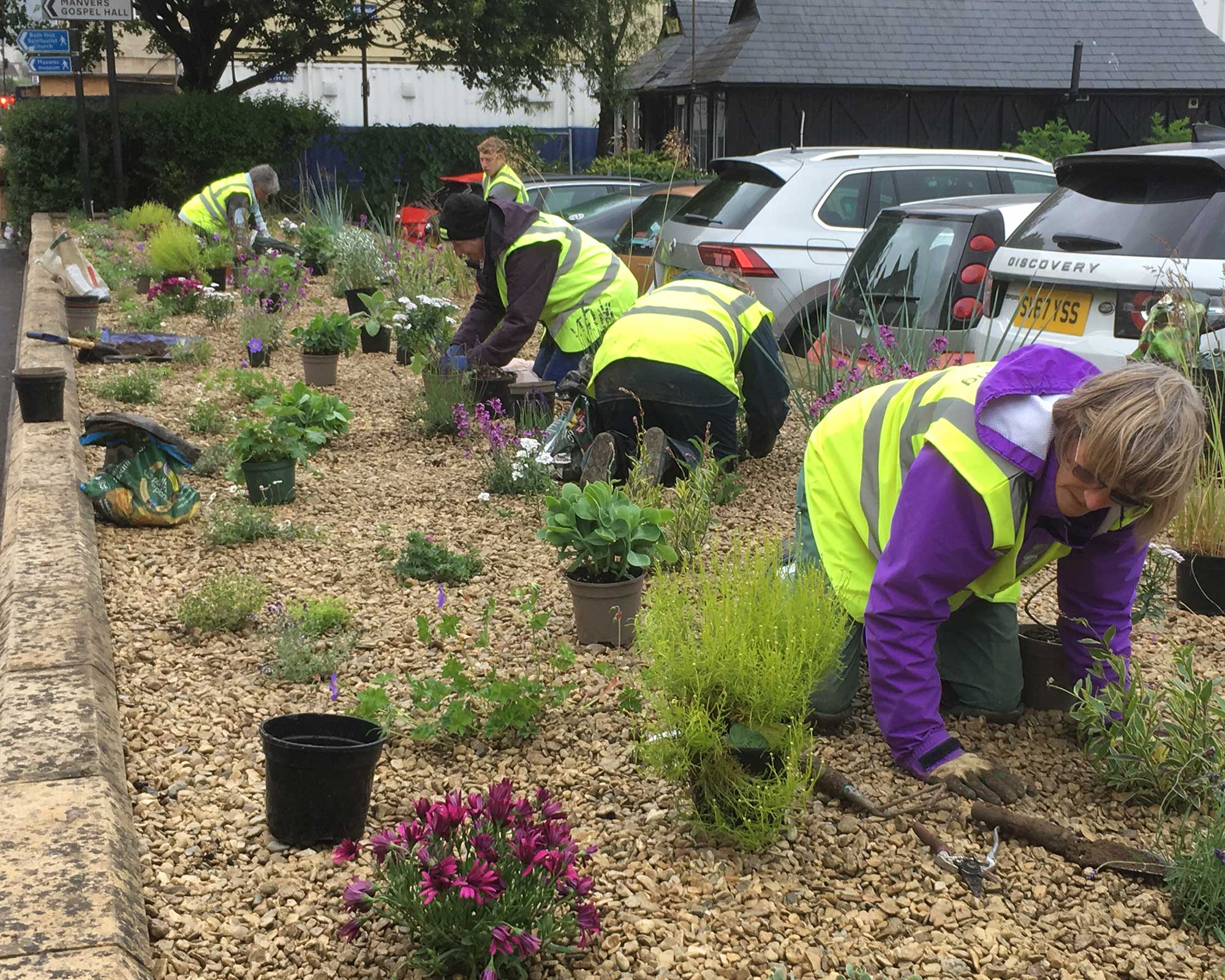
Bath in Bloom volunteers working on a city-center border
The RHS Community Wellbeing Grant
In February 2022, the RHS introduced another initiative to encourage growing together – the RHS Community Wellbeing Grant. 11 successful applicant groups were awarded, on average, £9,000 to support their existing gardening projects or create new ones. These included Hackney City Farm, Healthy Minds Calderdale, and Wen (Women's Environmental Network) of Tower Hamlets.
What's more, to celebrate RHS Garden Day 2022 the charity held a competition, where four communities – one each in England, Northern Ireland, Scotland, and Wales – could win a brand new garden created by a leading designer.
The winners from England were a community in Huntingdon, Cambridgeshire, who wanted to transform an unused area in the local park by their community center into a growing space for everyone. They envisioned a place for socializing, swapping skills, and cultivating crops in a kitchen garden for the community cafe and fridge.
Garden designer Arit Anderson will be creating the space for them. She explains how she turned to nature for inspiration for the design, and bees and beehives came to mind. 'They represent interconnectedness, organization, teamwork, and dedication and it's these qualities that Huntingdon demonstrates, and I wanted to incorporate into their garden,' she says.
'Growing food was really important to this community so I've incorporated hexagonal raised beds of different heights for their growing area so that people of varying abilities and ages can work side by side. There are also spaces for lots of people to get together and interact, as well as smaller, more intimate seating areas.’
Natasha Pierson, Coordinator of Huntingdon In Bloom says, 'It means so much to this community to win this garden, designed by Arit. So many different groups use our community center and having a beautiful space outside where different generations can meet and interact in a safe environment will be of huge benefit for mental, physical, and social wellbeing.'

Community gardening can bring people of all ages and backgrounds together
In Wales, Forgeside in Blaenavon has been awarded a community garden designed by Victoria Wade. It aims to provide a vibrant community hub, complete with an outdoor classroom and a public food-growing space. 'Nothing ever happens in our village so we're absolutely buzzing,’ says Geraint Reynolds, Chair of Forgeside Rugby Club. 'It's just surreal. We've felt so cut off over the last few years from the outside world as well as each other and this garden will become the beating heart of the community.'
He explains how many people don't have gardens at home, and there was no community space where people can all get together. What's more, 'There is a big reliance on food banks but now that we can grow fresh food for everyone we couldn't be more grateful.
'The garden really will transform daily life so the news has lifted the whole town – you only have to walk down the street now to see the big smiles on people's faces.'
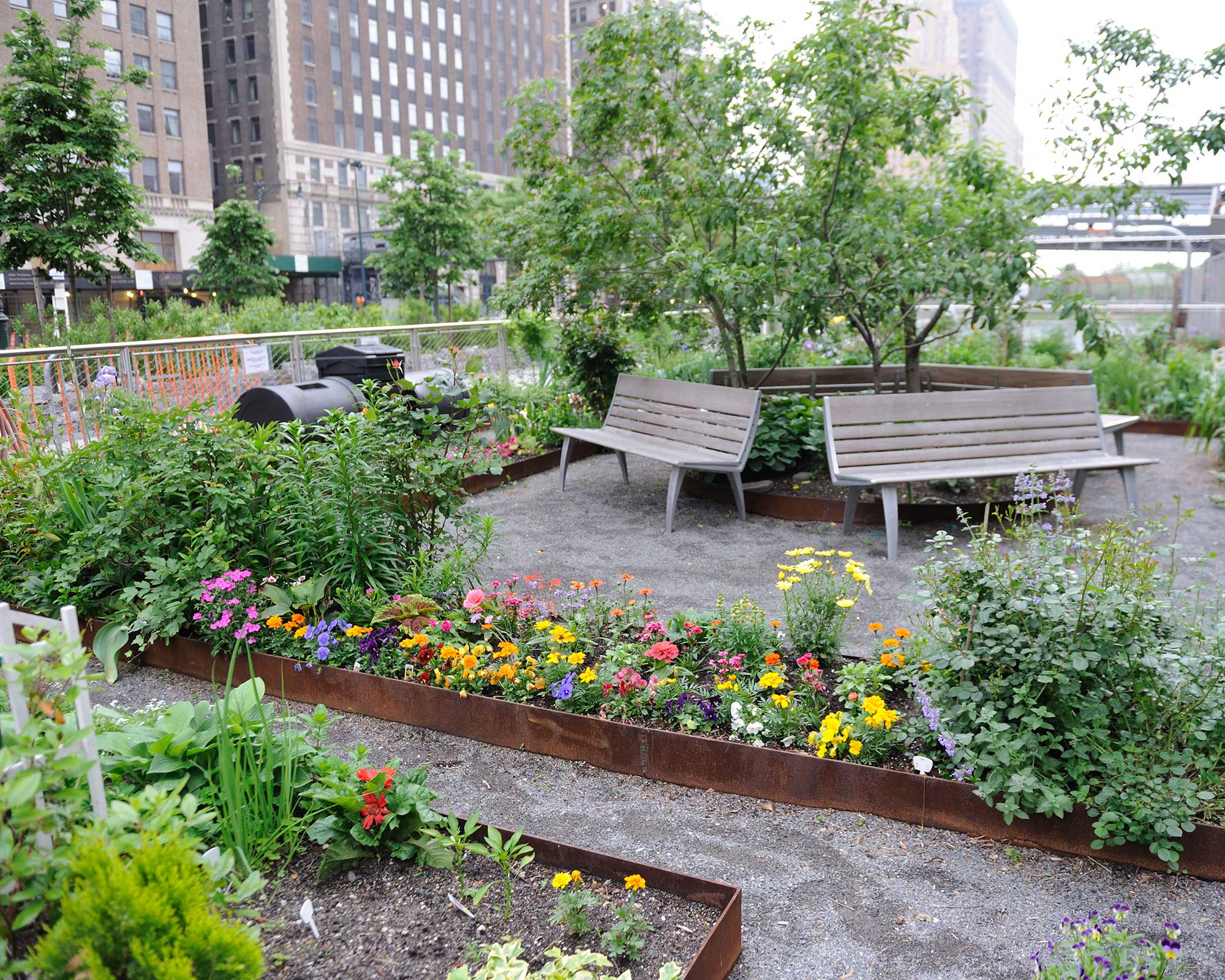
Community gardens can make urban spaces more pleasant to be in
How to get involved with community gardening
Whether you're a total novice or well-seasoned in garden design, community gardening is for everyone – that's one of the best things about it. It brings together people of all ages and backgrounds to create something beautiful and useful that brings others joy. It instills a sense of place, pride, and belonging, and offers the opportunity to develop new skills. As Cathy Walker, President of the American Community Gardening Association says, 'Through community gardening, we can become anything we would like to become, and our neighborhoods can truly bloom and flourish.'
You might be surprised at how easy it is to get involved. As most groups have websites, it can be a simple case of a quick online search and an email to get the ball rolling. The RHS has a handy online tool that allows you to search your local area in the UK, while the American Community Gardening Association has something similar that covers the US, Canada, and beyond.
It's natural to feel a little anxious starting something new, particularly with people you don't know. But Steve explains how the best thing to do is turn up and get stuck in, even if you've never gardened before. 'People are always willing to pass on experience and knowledge,' he says. 'People are very friendly and will help you.
'There is something for everyone to do – no one is at a loss,' he continues. And, you're likely to find similarities with others straight away – you're both there for the same purpose after all. What's more, gardening isn't the only way to get involved, Steve adds – groups are often looking for help with other aspects as well, such as social media and website maintenance.
Of course, you could also start up your own group. The RHS has lots of useful community gardening resources and advice on their website, including how to acquire space, recruit volunteers, and fundraising ideas. The Soil Science Society of America also has plenty of helpful information on how to get started.
As a plant-lover living in a top-floor apartment with no green space (although I can't complain about the view), community gardening certainly seems tempting. And, as the weather warms and the evenings lengthen, I can imagine it's a wonderful way to unwind away from screens. Perhaps it's time I joined in with the efforts to win the next Britain in Bloom award – watch this space!

The garden was always a big part of Holly's life growing up, as was the surrounding New Forest where she lived. Her appreciation for the great outdoors has only grown since then. She's been an allotment keeper, a professional gardener, and a botanical illustrator – plants are her passion.
